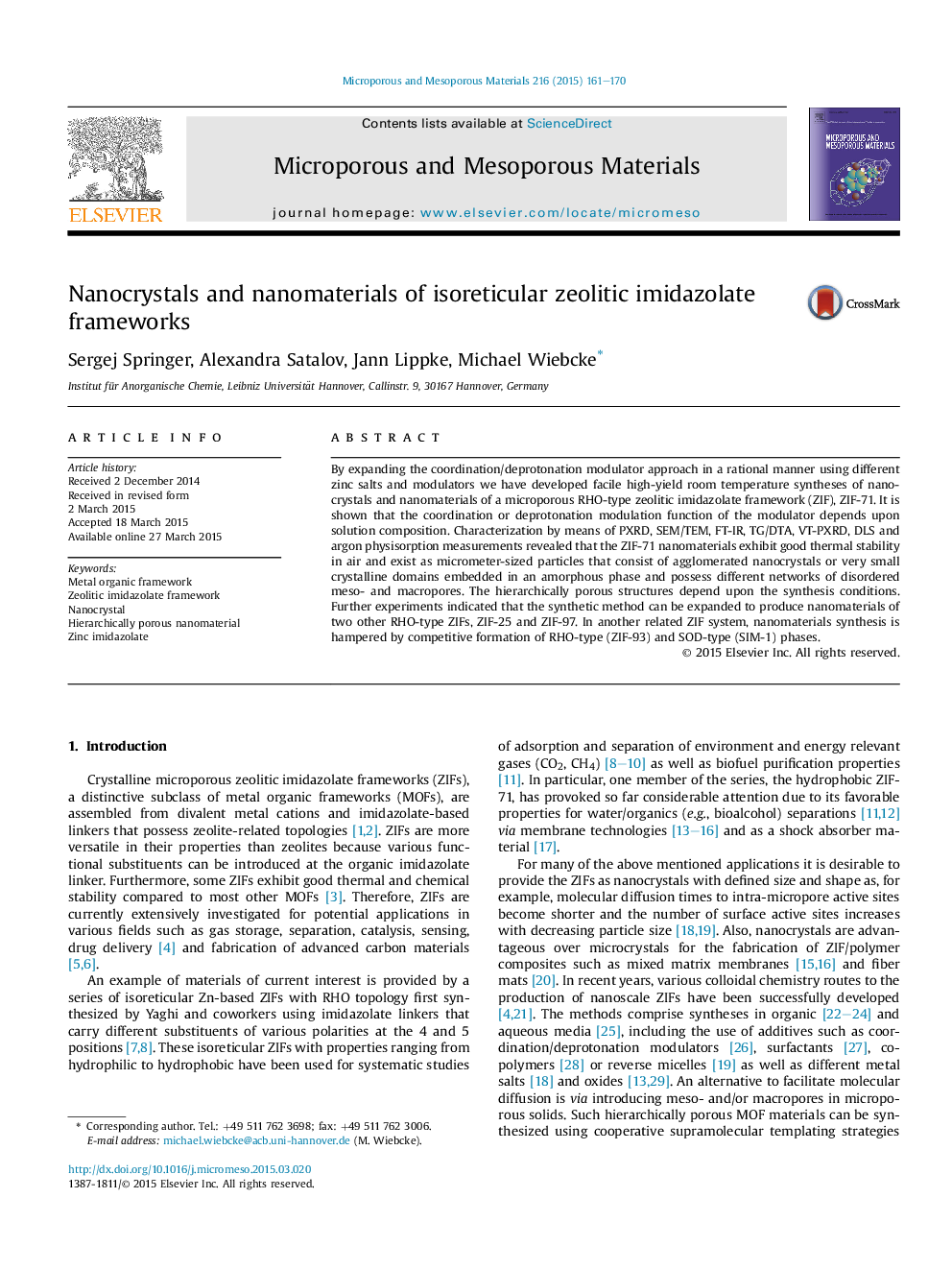| Article ID | Journal | Published Year | Pages | File Type |
|---|---|---|---|---|
| 72588 | Microporous and Mesoporous Materials | 2015 | 10 Pages |
•Nanocrystals and nanomaterials of RHO-type ZIF-71 have been prepared.•The coordination/deprotonation modulator approach was expanded.•The nanomaterials exist as micrometer-sized particles with hierarchical porosity.•The hierarchically porous structures depend upon synthesis conditions.•Nanomaterials can be prepared with other imidazolate linkers.
By expanding the coordination/deprotonation modulator approach in a rational manner using different zinc salts and modulators we have developed facile high-yield room temperature syntheses of nanocrystals and nanomaterials of a microporous RHO-type zeolitic imidazolate framework (ZIF), ZIF-71. It is shown that the coordination or deprotonation modulation function of the modulator depends upon solution composition. Characterization by means of PXRD, SEM/TEM, FT-IR, TG/DTA, VT-PXRD, DLS and argon physisorption measurements revealed that the ZIF-71 nanomaterials exhibit good thermal stability in air and exist as micrometer-sized particles that consist of agglomerated nanocrystals or very small crystalline domains embedded in an amorphous phase and possess different networks of disordered meso- and macropores. The hierarchically porous structures depend upon the synthesis conditions. Further experiments indicated that the synthetic method can be expanded to produce nanomaterials of two other RHO-type ZIFs, ZIF-25 and ZIF-97. In another related ZIF system, nanomaterials synthesis is hampered by competitive formation of RHO-type (ZIF-93) and SOD-type (SIM-1) phases.
Graphical abstractFigure optionsDownload full-size imageDownload as PowerPoint slide
